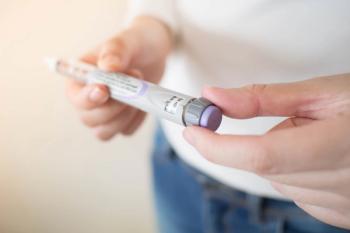
Pharmacist-Led Contraceptive Delivery App Works for Young Adults
Researchers developed, pilot-tested, and evaluated the feasibility of a telehealth electronic application that simulated pharmacists’ prescribing of contraceptives to adolescents and young adults.
Adolescents and young adults (AYAs) found the pharmacist-led e-platform Birth Control Pass (BCPass) was highly acceptable in delivering contraceptive prescriptions, according to data published in JMIR Pediatrics and Parenting.1 Along with AYAs providing critical feedback on the application, researchers also determined pharmacist prescribing of contraceptives was identical with routine clinic visits.
“Pregnancy rates among AYAs 15-19 years old have dropped from 61.8 births per 1000 in 1991 to 13.5 in 2022, while AYAs 20-24 years old reported a record low pregnancy rate of 60.4 births per 1000,” wrote authors of the study. “For 2010-2019, pregnancy rates declined the most for youth 19 years old and younger, a 50% decrease, followed by a 29% drop for 20-to-24-year-olds.”
In the US alone, similar statistics have been reported. From 1980 to 2007, US birth rates ranged from 65 to 70 births per 1000 women. Previous trends have commonly shown decreased birth rates during challenging economic times followed by an increase after the challenge is resolved. However, in the years after the Great Recession of 2008, birth rates have remained low, reported at 55.8 births per 1000 women in 2020.2
READ MORE:
Nearly 20 years after the 2008 recession, however, birth rates are continuing to show minimal signs of rebounding to previous levels of the late 20th century and prior.
“We’ve known for some time that abstinence-only programs are ineffective at reducing teen birth rates,” said Lawrence Wu, PhD, a professor in NYU’s Department of Sociology.3 “This work shows that more wide-reaching sex education programs—those not limited to abstinence—are successful in lowering rates of teen births.”
Despite researchers of the current study also mentioning the correlation between increased sex education and declining birth rates, they still presented evidence that identifies AYAs 15-24 years old as the age group most likely to experience an unintended pregnancy.1 Furthermore, researchers introduced their study by explaining women and those looking to give birth prefer convenience, simplicity, and affordability in receiving contraceptive prescriptions.
Amongst all the previous evidence regarding AYA birth rates and contraception administration, researchers were then led to investigate pharmacist-prescribed contraception for US adolescents.
“This study sought to develop an e-platform app called BCPass to simulate pharmacists prescribing contraceptives to AYA, test the acceptability and feasibility of pharmacist-delivered contraception among AYA as a proof of concept, and determine the concordance between pharmacists and providers on the appropriate contraceptive method(s) to be prescribed to participants,” they continued.1
They conducted their study in 2 phases: (1) development and usability of a prototype app to simulate pharmacists prescribing contraceptives to AYAs and (2) pilot-testing the app. A total of 22 AYAs (average age, 17.64; 59.1% with some high school education) were included in both phases of the study. Ten participants were included in phase 1 and 12 were included in phase 2.
“Overall, participants agreed or strongly agreed that using an app to receive contraceptives would make it easier for teens to access (n=19, 86%) and make contraceptive use less stigmatizing (n=19, 86%),” wrote the authors.1 “In addition, participants agreed that receiving contraception prescriptions from a pharmacist without a clinic visit would be safe (n=18, 82%), convenient (n=19, 86%), acceptable (n=18, 82%), and easy (n=18, 82%). Pharmacists and medical providers had 100% agreement on the prescribed contraceptive method for pilot participants.”
After completing integration of pharmacist-led contraceptive prescribing services within an application, researchers were able to simulate “easy, convenient, and fast” prescribing for AYAs. Despite 3 distinct issues identified during the development phase within AYA interviews, researchers were able to resolve them and experienced 0 issues during phase 2.
Upon testing the BCPass app, not only did researchers present evidence of AYAs’ safe and easy use of contraceptive services, but they also determined that apps like these could significantly improve overall access to these services. Finally, researchers also concluded success in pharmacist-led contraceptive services compared with routine clinical visits. Results of this study may be used to inform future developments of contraceptive-related technology to improve access.
“AYAs found contraceptive prescription by a pharmacist via an app to be highly acceptable and provided critical feedback to improve the design and delivery of the app,” concluded the authors.1 “Additionally, pharmacist contraceptive approvals and contraception as prescribed in routine clinic visits were identical.”
READ MORE:
Don’t get left behind: Sign up today for our
References
1. Knowles K, Lee S, Yapalater S, et al. Simulation of contraceptive access for adolescents and young adults using a pharmacist-staffed e-platform: development, usability, and pilot testing study. JPP. 2025;8:e60315. https://doi.org/10.2196/60315
2. Kearney M, Levine P, Pardue L. The mystery of the declining U.S. birth rate. Econofact. February 15, 2022. Accessed June 13, 2025. https://econofact.org/the-mystery-of-the-declining-u-s-birth-rate
3. Federally funded sex education programs linked to decline in teen birth rates, new study shows. News Release. NYU. February 14, 2022. Accessed June 13, 2025. https://www.nyu.edu/about/news-publications/news/2022/february/federally-funded-sex-education-programs-linked-to-decline-in-tee.html
Newsletter
Pharmacy practice is always changing. Stay ahead of the curve with the Drug Topics newsletter and get the latest drug information, industry trends, and patient care tips.























































































































